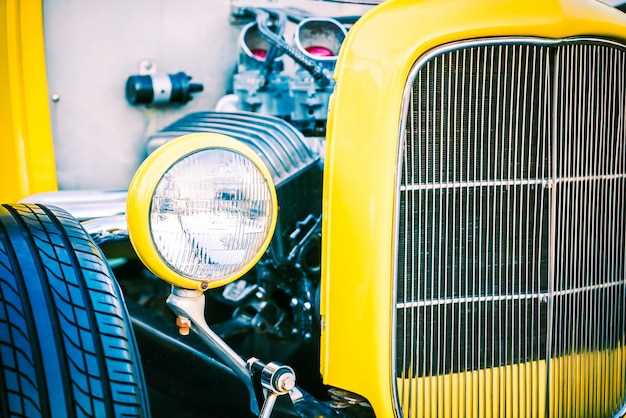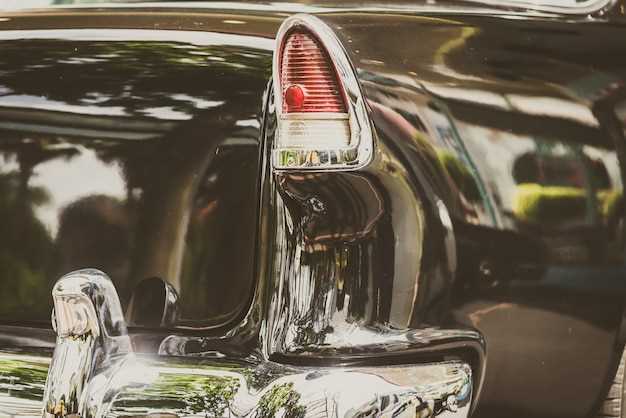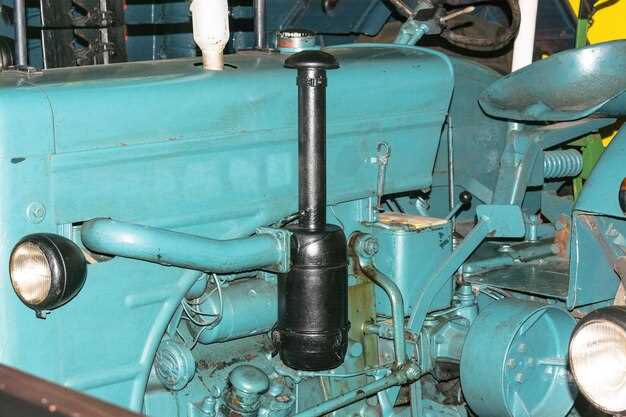
Converting a classic car to a fuel injection system can significantly enhance its performance and reliability. Traditional carbureted engines often suffer from issues such as inconsistent fuel delivery, poor fuel economy, and increased emissions. By making the switch to fuel injection, car enthusiasts can enjoy smoother acceleration, improved throttle response, and optimized fuel efficiency.
The process of retrofitting a classic vehicle with a fuel injection system involves several critical steps. Understanding the components involved, such as fuel injectors, sensors, and the engine control unit (ECU), is essential. Additionally, evaluating your vehicle’s specific requirements and existing components will help streamline the conversion process and minimize potential challenges.
This guide provides a comprehensive overview of the necessary steps, tools, and resources needed for a successful conversion. Whether you are a seasoned mechanic or a DIY enthusiast, our step-by-step approach will help you navigate the complexities of fuel injection conversion. Prepare to breathe new life into your classic car while embracing modern technology and performance enhancements.
Choosing the Right Fuel Injection System for Your Classic Car

When converting a classic car to fuel injection, selecting the appropriate system is crucial for maximizing performance and efficiency. This process involves understanding various types of fuel injection systems and their compatibility with your vehicle.
Here are key factors to consider when choosing a fuel injection system:
- Type of Fuel Injection:
- Throttling Body Injection: This system is ideal for those looking for easier installation. It closely resembles a carburetor setup and can often fit within the existing intake manifold.
- Port Fuel Injection: Offers better fuel atomization and efficiency. This system injects fuel directly into the intake manifold ports, providing optimal performance for high-horsepower applications.
- Direct Injection: Supplies fuel directly into the combustion chamber. This type is often more complex and may require significant engine modifications but is efficient and powerful.
- Engine Specifications:
- Consider the current horsepower and torque levels of your engine. Match the fuel injection system to meet or exceed these specifications.
- Assess any planned performance upgrades. An appropriate system will accommodate future enhancements such as larger turbos or superchargers.
- Control Options:
- Standalone Engine Management Systems: These provide comprehensive control over fuel delivery, ignition timing, and other parameters, making them suitable for extensive modifications.
- Integrated Systems: Often easier to install and configure but may offer limited customization compared to standalone options.
- Budget and Availability:
- Determine your budget for the conversion. Some systems can be expensive, especially those requiring additional components or software.
- Research the availability of components and support for the chosen system. A well-supported system can ease the installation and tuning process.
- Expertise Required:
- Consider your mechanical skills and experience. Some systems may require advanced knowledge for installation and tuning, while others may be more user-friendly.
- If you’re unsure, consult with a professional or seek guidance from experienced individuals in the classic car community.
Overall, the right fuel injection system for your classic car should balance performance, compatibility, and your personal preferences. Take the time to research and evaluate different options to ensure a successful conversion that enhances driving experience and reliability.
Step-by-Step Process for Installing Fuel Injection
Converting a classic car to fuel injection involves a series of methodical steps to ensure proper installation and functionality. Follow this comprehensive guide for a successful transition.
1. Gather Necessary Tools and Components
Before starting, assemble all required tools and components. This typically includes a fuel injection system kit, wiring harness, fuel pump, fuel lines, and sensors. Ensure you have basic hand tools, sockets, pliers, a multimeter, and safety equipment.
2. Prepare the Engine Compartment
Remove any existing carburetors and related components. Clean the area to provide a tidy workspace. Inspect the condition of the intake manifold and consider replacing or modifying it for compatibility with fuel injectors.
3. Install the Fuel Injection System
Begin by mounting the throttle body or intake manifold equipped with injectors onto the engine. Follow the manufacturer’s guidelines for securing the components. Ensure that the alignment is correct to avoid air leaks.
4. Set Up the Fuel System
Install the fuel pump according to the specifications provided in the conversion kit. Position the pump near the fuel tank to ensure proper suction. Run new fuel lines from the tank to the pump and from the pump to the fuel rail, ensuring all connections are tight and secure.
5. Wire the System
Connect the wiring harness to the injectors, throttle position sensor, and any other necessary sensors such as the mass airflow sensor. Follow the wiring diagram included with your kit carefully to avoid miswiring, which could lead to system malfunctions.
6. Install the Engine Control Unit (ECU)
Secure the ECU in a location protected from heat and moisture. Connect it to the wiring harness and ensure all sensors are properly linked. Calibration may be required to ensure the ECU can adjust air-fuel mixtures accurately.
7. Initial Testing
Before starting the engine, double-check all connections, ensuring there are no fuel leaks or loose wiring. Power up the system without starting the engine to check for any error codes or malfunctions indicated by the ECU.
8. Start the Engine
Once everything is verified, start the engine. Monitor for smooth operation and listen for any unusual sounds. Allow the engine to reach normal operating temperature and check for leaks again during this phase.
9. Fine-Tuning
After the initial start, fine-tuning the system is essential. Use a diagnostic tool to adjust parameters for optimal performance. Make adjustments to idle speed, air-fuel ratios, and other settings as necessary. Road test the vehicle to assess performance and make further adjustments as required.
10. Regular Maintenance
Once installed, regular maintenance of the fuel injection system is crucial. Check connections and sensors periodically, and keep the fuel filters clean. This ensures longevity and consistent performance of your classic car’s new fuel injection system.
Troubleshooting Common Issues During Conversion

Converting a classic car to fuel injection can present several challenges. Identifying and resolving these issues promptly can save time and enhance the overall driving experience. Below are some common problems developers encounter during the conversion process and their solutions.
1. Poor Engine Performance
If the engine exhibits sluggishness or stalling after conversion, the fuel pump may not be delivering adequate pressure. Ensure that the fuel pump is compatible with the fuel injection system and verify its output using a fuel pressure gauge. Additionally, check for any restrictions in the fuel lines or a clogged fuel filter.
2. Difficulty Starting the Engine
Starting issues may arise if the injectors are not firing correctly. This could be due to an improper electrical connection or a malfunctioning engine control unit (ECU). Inspect the wiring harness for any frayed or loose connections. Also, confirm that the ECU is programmed correctly for the new fuel injection setup.
3. Engine Misfire or Rough Idle
Misfires can occur if the fuel-to-air mixture is off balance. First, verify that all sensor connections are secure and functioning properly. Check the mass air flow sensor (MAF) and oxygen sensors for accurate readings. Adjusting the ECU settings or recalibrating the system may be necessary to achieve optimal performance.
4. Fuel Leaks
Leaks can occur at various points in the fuel system. Check all connections, including those at the fuel rail and injector seals. Use a fuel pressure tester to inspect for weak spots in the lines. If a leak is detected, replace any compromised components immediately to avert potential fire hazards.
5. Computer Compatibility Issues
Using an ECU not designed for the specific engine can lead to compatibility problems. Ensure that the selected ECU supports the engine’s parameters, and consider utilizing a tuning service for optimal performance matching. Additionally, check that all sensors are compatible with the ECU to avoid erroneous readings.
6. Excessive Fuel Consumption
If fuel consumption is higher than expected, the fuel injection system might be over-delivering fuel due to incorrect calibration. Review the tuning settings within the ECU to optimize the air-fuel mixture. Also, inspect for any vacuum leaks which may disrupt normal sensor operation.
By systematically addressing these common issues with a methodical approach, you can ensure a smooth transition from carburetor to fuel injection. Thorough checks and careful calibration will lead to a successful and rewarding conversion project.
